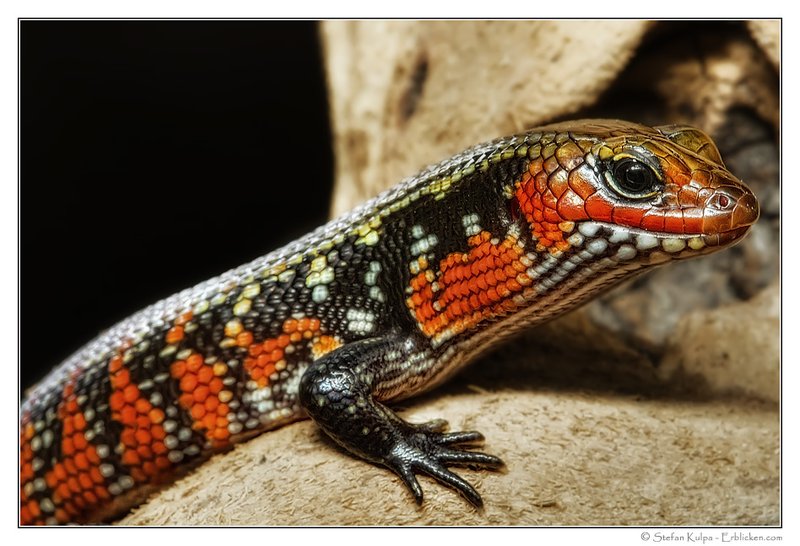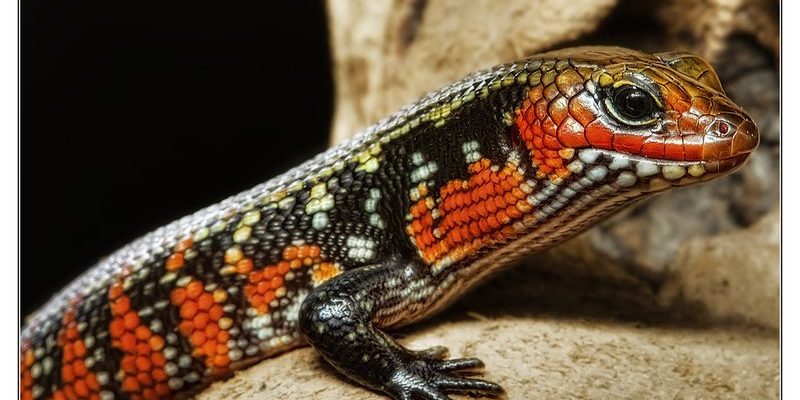
Think of the fire skink like a skilled chef in the wild. It’s not just about cooking up a random dish but a delicate balance of ingredients that makes a delicious meal. In this article, we’ll explore the fire skink’s diet, its hunting techniques, and the environment in which it thrives, so you can understand what makes this little lizard so remarkable.
The Basics of a Fire Skink’s Diet
Fire skinks are primarily *insectivores*, meaning they mainly eat insects. Their diet typically consists of:
- Crickets
- Mealworms
- Caterpillars
- Ants
- Other small arthropods
These lizards are opportunistic eaters, so they won’t shy away from munching on other small creatures when available. You might be wondering why they focus on insects — it’s all about getting the right nutrients. The protein found in insects is crucial for their growth and overall health.
One interesting thing to note is that the availability of food impacts their diet. If you’re in a region where fire skinks are common, you might notice them snacking on whatever’s around. This adaptability helps them survive in various environments, from rainforests to scrublands.
How Fire Skinks Hunt
When it comes to hunting, fire skinks are not just waiting around for a meal to come by. They have a few clever strategies up their sleeves. Here’s how they do it:
1. Ambush Predator
Fire skinks often use stealth as their primary hunting tactic. They like to hide among rocks, in leaf litter, or even in crevices. This makes them excellent ambush predators. Picture a cat waiting patiently for its prey — that’s how fire skinks operate. They’ll stay still and quiet, waiting for an unsuspecting insect to wander too close.
2. Quick Reflexes
When an insect strays into striking distance, the fire skink springs into action. These lizards have lightning-fast reflexes that allow them to dart out and catch their prey with their quick, flicking tongues. This method is similar to a chameleon, which uses its long tongue to snatch insects. The fire skink’s ability to catch food quickly is crucial for their survival, especially in competitive environments.
The Role of Habitat in Feeding
The fire skink’s natural habitat plays a significant role in how it hunts and what it eats. Typically found in Africa, particularly in areas like the Congo Basin, these lizards thrive in moist, warm environments filled with plenty of hiding spots.
Let me explain why habitat matters. A lush environment full of plants and debris provides cover for the skink and a buffet of insects. If you think about it, the more diverse the habitat, the more food options available. This means fire skinks are pretty lucky in their natural homes, having access to a constant supply of insects to feast on.
Competition and Predators
Like any creature, fire skinks face challenges in their quest for food. They have to compete with other insectivores, such as various species of birds and snakes. Here’s the thing: navigating food competition is a delicate balance. Fire skinks have to be quick and smart about when and where they hunt.
On the flip side, they also have to watch out for larger predators. Birds of prey, snakes, and even larger mammals might see fire skinks as a tasty snack. This constant game of cat and mouse drives them to be more cunning in their approach. They often choose to hunt during specific times when they feel safer, like in the cover of dusk.
Feeding Habits Beyond Hunting
Fire skinks don’t just hunt; they also exhibit different behaviors around feeding. For instance, they are known to be quite picky eaters at times. If an insect doesn’t look appetizing, they might just let it pass. This selectivity is important because it helps them maintain good health and avoid toxic prey.
Moreover, fire skinks are often seen engaging in social behaviors during feeding. They can share their space and sometimes hunt together, which can increase their chances of snagging a meal. Think of it as teaming up with friends for a dinner hunt — there’s safety and success in numbers.
How Diet Affects Their Health
Feeding habits have a direct impact on the health of fire skinks. A balanced diet full of diverse insects contributes to their vibrant colors and energy levels. When in captivity, it’s essential for keepers to replicate their natural diet as closely as possible.
Poor nutrition can lead to a range of health issues for these lizards, including stunted growth, dull colors, and weakened immune systems. When you look at a fire skink, you want to see those bright hues shining through, which is a reflection of their good health. This goes to show how closely tied their diet is to their wellbeing.
In summary, fire skinks are not only stunning creatures; they’re skilled hunters with specific dietary needs that shape their lives. From their insectivorous diet to their clever hunting techniques, they’ve adapted beautifully to their environments. Understanding what fire skinks eat and how they hunt offers a peek into the raw beauty of nature and survival.
So, the next time you see a fire skink basking in the sun, remember that beneath that vibrant exterior lies a hungry little hunter, navigating its world one insect at a time. The joys of nature are truly remarkable, and the fire skink is just one vivid example of how life finds ways to thrive.

